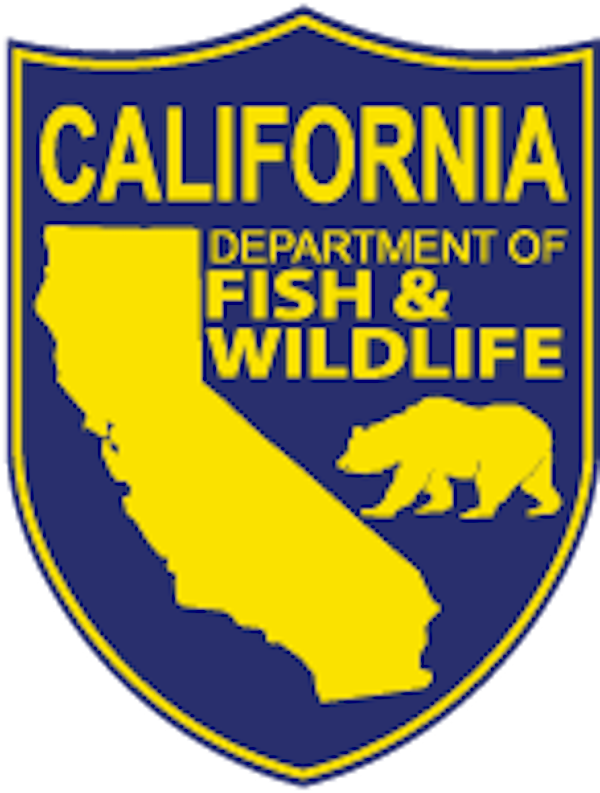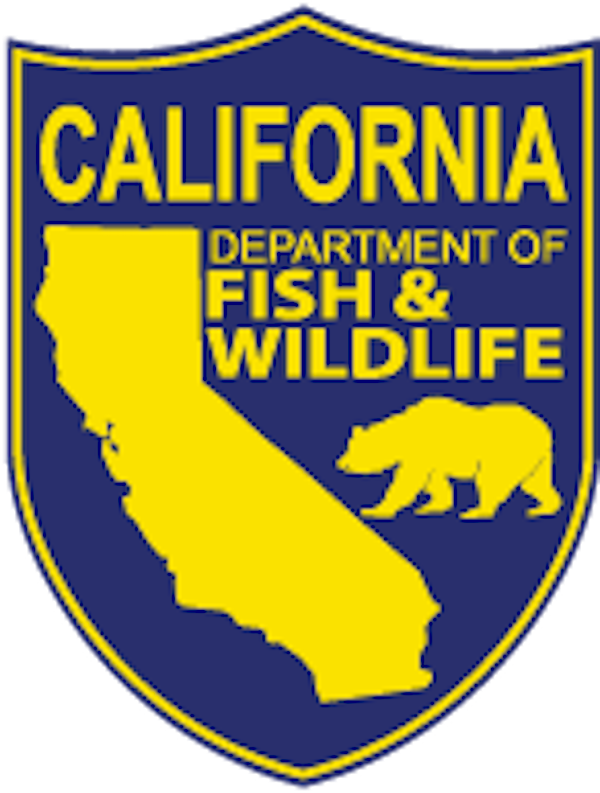Fish Report for 8-26-2020
California’s First Dove Season Opener Approaches

by California Department of Fish & Wildlife
8-26-2020
Website
The first of two opening days of California’s dove hunting season is fast approaching. This year’s season for mourning dove, white-winged dove, spotted dove and ringed turtle dove will run from Tuesday, Sept. 1 through Tuesday, Sept. 15 statewide, followed by a second hunt period, Saturday, Nov. 14 through Monday, Dec. 28.
Mourning dove and white-winged dove have a daily bag limit of 15, up to 10 of which may be white-winged dove. The possession limit is triple the daily bag limit. There are no limits on spotted dove and ringed turtle dove. Hunting for Eurasian collared-dove is open year-round and there is no limit. A dove identification guide can be found on the CDFW website.
Please note that nonlead ammunition is required when taking wildlife with a firearm anywhere in California. Please plan accordingly. For more information please see the California Department of Fish and Wildlife (CDFW) nonlead ammunition page.
Due to safeguards and limitations necessitated by COVID-19, CDFW asks all hunters to please respect physical distancing from other hunters and adhere to all site-specific rules and regulations. Before heading to a CDFW facility or public area, please check to see if any regulations or restrictions have been instituted to help prevent the spread of COVID-19.
All of CDFW’s most popular and productive wildlife areas for dove hunting will be open to the public during the first half of the season. These areas include Upper Butte Basin, Gray Lodge, Yolo Bypass, North Grasslands, Los Banos and Imperial Valley wildlife areas, and Palo Verde Ecological Reserve. All of these areas have been planted with food crops to attract and hold doves. Maps are available at some check station locations. Entry procedures vary from area to area, so hunters are advised to call ahead in preparing for their hunt. Portions of Los Banos and North Grasslands wildlife areas are restricted to special permit holders until noon on Sept. 1, after which they open to public hunting the remainder of the season.
Mourning doves are denizens of dry environments, and are capable of exploiting many food types and sources. There have been a few isolated cases of avian trichomonas in mourning dove this year, so hunters are encouraged to report any birds that appear to have the disease.
While the final results of the 2020 statewide dove banding effort are not yet available, initial numbers indicate no shortage of mourning doves for the opener. Hunters who encounter a banded bird are asked to report it to the U.S. Geological Survey Bird Banding Lab (www.reportband.gov). Banded birds are part of important biological monitoring and reporting of bands completes the process.
Dove hunting is considered a great starting point for new hunters. There is very little equipment required and just about any place open for hunting will have mourning doves. Minimum requirements are a valid hunting license and upland game bird stamp (if the hunter is 18 or older), good footwear, a shotgun, shotgun shells and plenty of water. Hunters should be careful not to underestimate the amount of fluids needed, especially during the first half of the season.
Most successful dove hunters position themselves near a known flyway for doves. These sites can be near paths to and from roost sites, water, food sources or gravel. Doves are usually taken by pass shooting these flyways, but hunters may also be successful jump shooting. Dove movement is most frequent in the early mornings and late evenings when they are flying from and to their roost sites (this is when the majority of hunters go into the field). Late morning to early afternoon can be better for jump shooting. Hunters should scout out dove activity in the area a few times just prior to hunting.
Important laws and regulations to consider include the following:
- Shoot time for doves is one half hour before sunrise to sunset.
- All hunters — including junior hunters — are required to carry their hunting license with them.
- Hunters must have written permission from the landowner prior to hunting on private land.
- Bag limits apply to each hunter and no one can take more than one legal limit.
- It is illegal to shoot within 150 yards of an occupied dwelling.
- It is illegal to shoot from or across a public roadway.
- It is illegal to hunt within 200 yards of an artificial water source for wildlife.
It is the responsibility of every hunter to know and follow all laws.
Safety is the most important part of any hunting adventure. Safety glasses are a simple way to protect the eyes and are available in many shades for hunting in all types of lighting situations.
The weather throughout the state on Sept. 1 is expected to be hot and dry. CDFW urges hunters to drink plenty of fluids, wear sun protection and have a plan in case of an accident.
More Reports
CDFW’s Franks Tract Plan Now Available for Public Review
Frank's Tract SRA
8-22-2020
The California Department of Fish and Wildlife (CDFW) has released its draft report exploring options for achieving recreation, ecosystem, water...... Read More
California Department of Fish & Wildlife Reports
for Thursday, August 13th, 2020
: Why no Elk in the San Gabriel Mountains?
: What about moose – or elk – in the Sierra?
: What’s the rule on how many lines/poles you can have on the beach for one person?

Website Hosting and Design provided by TECK.net